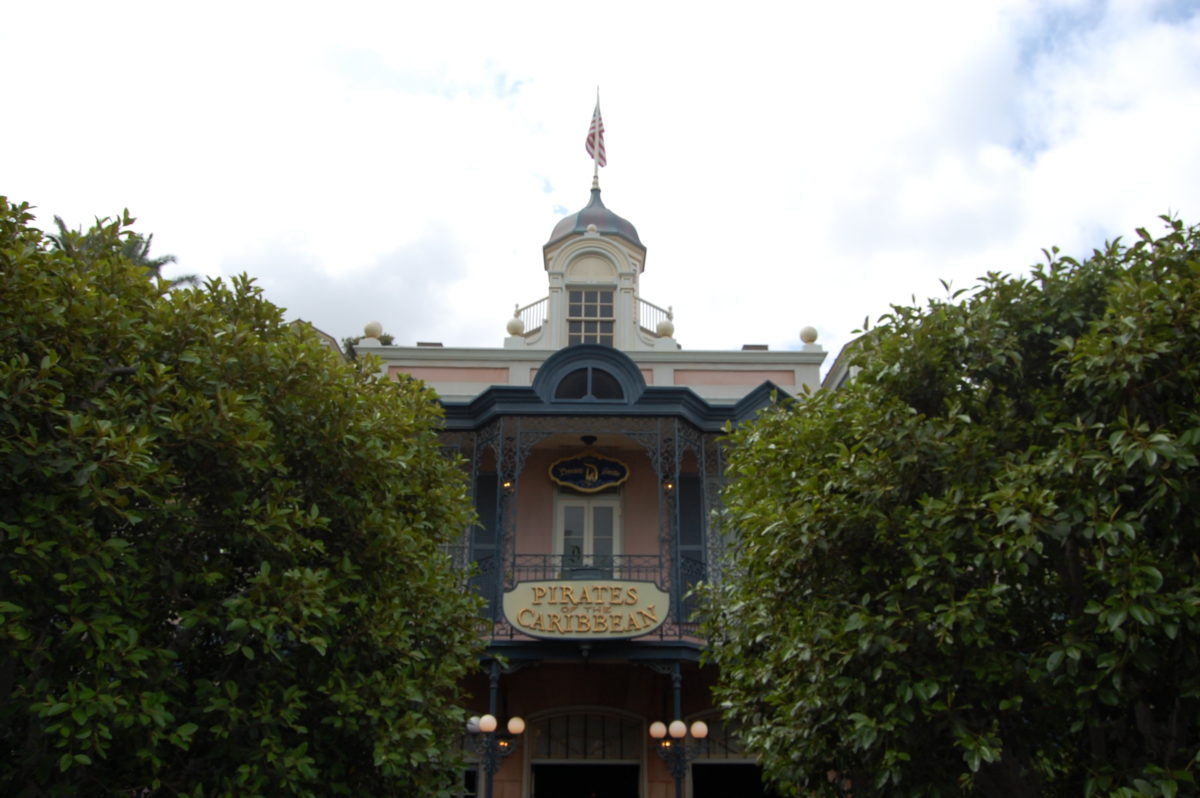Theme park fans are an interesting bunch of people. We consist of everything from blue collar vacationers, hipster theatre auteurs, oh-so-serious designers, cosplaying character seekers, internet attached reporters, teenage thrill seekers, retired day-trippers, and every combination in between. And in this diverse group debates rage on pretty often around themes of what themed entertainment should be, who it should target, and what its ambitions should be. Entertainment? Thrills? Inspiration? Escape? Community? Fun? It’s interesting that in a world that caters itself to so many different niches of preference, that one attraction comes up again and again as a shining example of common ambition. Seemingly almost everyone continually agrees that the original Pirates of the Caribbean at Disneyland is one of, if not the, best themed attractions ever built. So what makes Pirates so great? Why does it work so well?
Well, of course no discussion about the excellence of Pirates would be complete without taking a moment to state an obvious reason; the ride is a showcase of technical and artistic perfection. The set and lighting design is wonderful and detailed, the sculpture worthy of galleries, the sound design multilayered, the building comfortably cool, and the acoustics better than even many attractions and theaters built today. Those features are foundational to creating any truly great entertainment experience. It’s tempting to say that that is the reason Pirates always stands out: the scale of the sets, and quantity of animatronics, duration of the ride, effectiveness of the effects, and the overall detail create an immersive environment that just really excels. And while all of that certainly plays a role, I think the idea that lavishness alone creates amazing attractions is a bit of a myopic conclusion: one that seems to be playing an increasing role in the design of new attractions and even more in their publicity. The idea that absurdly grand environments and obsessively detailed story are what make something immersive is true, but is also a limited understanding of the word ‘immersion’.
See, ‘immersion’ has become somewhat of a buzzword in the popular lexicon – being used to describe everything from the upcoming Star Wars land and groundbreaking theatrical experiments to cell phones screens and restaurant menus. Even in the theme park world, the word can be overused and find generic meaning. Even when it is used to describe experiences that genuinely transport, this is often achieved narratively, architecturally, or with details, props, and backstory. And while there is no doubt that those techniques are crucial they also only get Pirates halfway to being the flagship that it is. So much more comes from the design of the attraction structure itself and the way it immerses the rider into those environments and story. Pirates chooses to immerse you viscerally and emotionally in the way the experience unfolds. It uses the physical space and the progression of that space to affect techniques of hypnosis and patterns of dreams to immerse experientially, not just thematically. And that focus on the experiential story of the audience itself is what makes all the difference.

